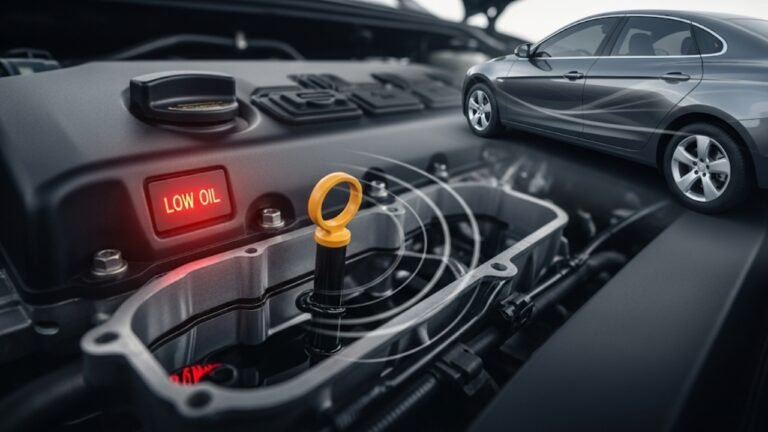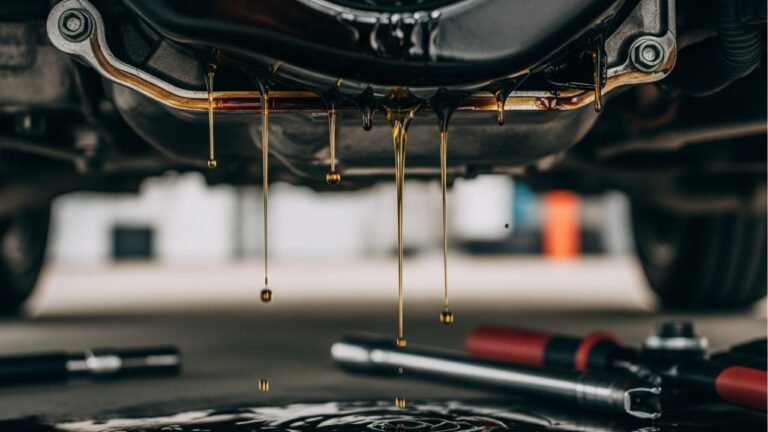Using a Car Oil Extractor Pump: Simplify Your Oil Changes

I still remember my first oil change. It was a messy Saturday morning, with my hands slippery with old oil and my patience wearing thin. That’s when I discovered the car oil extractor pump, and it changed everything. If you’ve ever struggled with draining engine oil or just hated crawling under your car, this little tool is your best friend. In this article, I’ll share everything you need to know about using a car oil extractor pump, why it’s a game-changer, and how it can make your life so much easier.
Why a Car Oil Extractor Pump Is a Game-Changer for DIY Mechanics

The car oil extractor pump works by creating suction to pull the used oil out through the dipstick tube. No need to get under the car, no spills, and no stress. Plus, it’s surprisingly fast—often faster than the traditional method. I’ve timed it, and what used to take me an hour can now be done in about 20 minutes. The best part? I stay clean and oil-free. Trust me, your hands will thank you.
How a Car Oil Extractor Pump Works: Simplified for Everyone
Imagine a giant straw that sucks out all the bad stuff—that’s basically how a car oil extractor pump operates. Here’s the simple breakdown:
- Insert the tube: Slide the extractor’s thin tube down the engine’s dipstick channel.
- Create suction: Pump the handle or power on the device to create a vacuum.
- Extract the oil: The old oil gets pulled out into the extractor’s container.
- Dispose of old oil: Once it’s full, empty it into a proper disposal container.
This entire process is as smooth as pouring yourself a glass of juice. It’s quick, clean, and satisfying, especially when you realize you’ve skipped the back-breaking crawl under your car.
| Step | Action |
| Prepare the extractor | Set up the car oil extractor pump. |
| Insert the suction tube | Feed it through the dipstick opening. |
| Start extraction | Pump or switch on the suction mechanism. |
| Collect used oil | Watch as oil fills the extractor container. |
| Dispose of old oil | Empty safely into a recycling bin. |
Personal Story: The Day I Discovered the Car Oil Extractor Pump
A couple of years ago, I decided to change the oil on my aging sedan. It was supposed to be a simple job, but I ended up with a bruised knuckle, an oil stain on my driveway, and a grumpy mood. That’s when a friend told me about the car oil extractor pump.
I ordered one online, and it arrived a few days later. It was a compact, hand-pump model with a clear container and a long, flexible tube. The next weekend, I decided to give it a shot. I inserted the tube, started pumping, and watched in amazement as the oil flowed effortlessly into the container. I couldn’t believe it—no mess, no crawling, and no hassle. It felt like I’d unlocked a secret mechanic’s hack.
Types of Car Oil Extractor Pumps: Which One Is Right for You?
There’s a variety of car oil extractor pump models on the market, and choosing the right one depends on your needs and preferences. Here’s a quick breakdown:
- Manual pumps: These are hand-operated and great for occasional DIY oil changes. They’re affordable, portable, and don’t need a power source.
- Electric pumps: Perfect for frequent oil changers. They’re faster and require less effort but need a power supply.
- Pneumatic pumps: Ideal for professional mechanics or garages. These connect to an air compressor and handle large volumes of oil quickly.
Each type has its pros and cons, so think about how often you’ll use it and what kind of vehicles you’ll be working on. Personally, I started with a manual pump and later upgraded to an electric model for my SUV, which made oil changes a breeze.
Benefits of Using a Car Oil Extractor Pump
Using a car oil extractor pump isn’t just about convenience—it offers a range of benefits that make it a smart choice for anyone who values their time and sanity:
- Cleaner oil changes: No more spills or drips on your garage floor.
- Saves time: Oil changes can be done in 15–20 minutes, even on a busy day.
- Easy to use: You don’t need to be a mechanic to figure it out.
- Great for hard-to-reach engines: Perfect for cars, boats, motorcycles, and even lawnmowers.
- Environmentally friendly: Collects used oil neatly for proper disposal.
I can’t tell you how many times my extractor pump has saved me from messy disasters. It’s like having a personal oil-change assistant at your fingertips.
How to Choose the Best Car Oil Extractor Pump
When shopping for a car oil extractor pump, keep these tips in mind to get the best bang for your buck:
- Capacity: Make sure the container is big enough to handle your engine’s oil volume.
- Material: Look for durable construction—metal pumps last longer than cheap plastic ones.
- Ease of use: Opt for a model with a clear container and easy-to-use handles.
- Portability: Consider size and weight if you need to move it around.
- Compatibility: Ensure the suction tube fits your vehicle’s dipstick tube snugly.
I made the mistake of buying a tiny pump once, only to realize it couldn’t handle my truck’s oil volume. Lesson learned: always check capacity before clicking “buy.”
Common Mistakes to Avoid with a Car Oil Extractor Pump
Let’s be real—mistakes happen. But with a car oil extractor pump, a few missteps can turn a simple oil change into a mess. Here are some pitfalls to watch out for:
- Using the wrong tube size: If the suction tube doesn’t fit your dipstick tube properly, you’ll struggle to create a vacuum.
- Not checking oil temperature: Cold oil is thick and hard to extract. Run the engine for a few minutes to warm it up first.
- Overfilling the container: Pay attention to how much oil you’re pulling out. If the container overflows, you’ll have a spill to clean up.
- Skipping proper disposal: Always recycle used oil at an authorized center. Don’t dump it down the drain—it’s harmful to the environment.
Step-by-Step Guide: Using a Car Oil Extractor Pump Like a Pro
Once you get the hang of it, using a car oil extractor pump feels almost therapeutic. It’s like making yourself a cup of tea on a Sunday afternoon—it’s easy, satisfying, and rewarding. Here’s a simple step-by-step guide:
- Warm up the engine: Let it run for 5-10 minutes to thin the oil.
- Turn off the engine: Safety first—always shut it down before extracting oil.
- Insert the tube: Slide the suction tube through the dipstick hole until it hits the bottom.
- Create a vacuum: Either pump the handle or switch on the electric extractor.
- Watch the magic happen: The oil will flow into the container smoothly.
- Check the oil level: Make sure you’ve removed all the old oil.
- Dispose of the oil properly: Use an approved recycling center or disposal service.
Every time I do this, I’m amazed at how much easier it is compared to the traditional method. It’s almost like the extractor pump is whispering, “Relax, I’ve got this.”
Cleaning and Maintaining Your Car Oil Extractor Pump
Just like your car, the car oil extractor pump needs a little TLC to stay in top shape. After each use, I make it a habit to clean the suction tube and empty the container thoroughly. This prevents oil residue from hardening and ensures smooth operation the next time I use it.
Here are some quick cleaning tips:
- Rinse the tube with warm soapy water: This dissolves any stubborn oil.
- Wipe down the container: Use a clean rag to remove oil smudges.
- Dry everything: Make sure it’s fully dry before storing it to prevent rust or mold.
- Store it in a dry place: Keep it out of direct sunlight and away from extreme temperatures.
A well-maintained pump lasts longer and keeps working like a charm. Trust me, a few minutes of cleaning can save you from buying a new one down the road.
When Should You Use a Car Oil Extractor Pump?
While I’m a big fan of using a car oil extractor pump for routine oil changes, it’s also a lifesaver in other situations:
- When working in tight spaces: If you can’t access the oil drain plug, an extractor pump is your best friend.
- During cold weather: Crawling under the car on a freezing morning? No thanks! The pump saves you the trouble.
- For boats and motorcycles: These often have hard-to-reach drain plugs, making the extractor pump a must-have.
- For quick top-offs: Sometimes you just need to remove a little oil to adjust levels.
It’s like having a Swiss Army knife in your garage—always handy, always reliable.
Relatable Anecdote: My Neighbor’s Boat Dilemma Solved with a Car Oil Extractor Pump
A couple of summers ago, my neighbor, Tom, called me in a panic. His boat’s oil needed changing, but the drain plug was stuck, and he was dreading the mess. I lent him my trusty car oil extractor pump. Within half an hour, Tom had the old oil out, and he didn’t spill a drop. He even joked that the extractor pump should be standard equipment on every boat. After that, he bought his own and hasn’t looked back since.
How the Car Oil Extractor Pump Saves You Money and Time
Think about it—every trip to the mechanic for an oil change costs you at least $50, not to mention the time spent waiting around. With a car oil extractor pump, you’re in control. You can change your oil at home, on your schedule, and for a fraction of the cost. Plus, it’s a one-time investment that pays for itself in just a few uses.
I calculated my savings one day and realized I’d saved over $300 in a year just by doing my own oil changes with the extractor pump. That’s money I used for a weekend road trip instead. Who says car maintenance has to be a chore?
Troubleshooting Common Issues with a Car Oil Extractor Pump
Sometimes, things don’t go as planned. Here are a few hiccups you might encounter and how to fix them:
- Weak suction: Check if the tube is properly inserted and if the seals are intact.
- Slow extraction: Warm up the engine a bit more to thin the oil.
- Tube won’t fit: Make sure you have the correct size for your dipstick tube.
- Oil left in the engine: Move the tube around gently to reach hidden pockets of oil.
I’ve dealt with each of these at some point, but with a little patience and tweaking, they’re easy to resolve. And once you get the hang of it, oil changes will feel like second nature.
Safety Tips for Using a Car Oil Extractor Pump
Safety always comes first, even with something as straightforward as a car oil extractor pump. Here are a few golden rules to follow:
- Never use the pump with a running engine: Always turn it off first.
- Work on a level surface: Prevent the vehicle from moving unexpectedly.
- Wear gloves: Protect your hands from oil and sharp edges.
- Dispose of oil responsibly: Take it to a certified recycling center.
- Follow manufacturer instructions: Every pump has its quirks, so read the manual.
These tips might sound simple, but they can prevent accidents and keep your workspace safe and clean.
The Future of DIY Oil Changes with the Car Oil Extractor Pump
As cars become more complex, having tools like the car oil extractor pump is more important than ever. With newer models often having hard-to-reach components, the extractor pump gives everyday drivers the confidence to handle basic maintenance themselves. Plus, with increasing environmental awareness, cleaner oil changes are a win-win for your wallet and the planet.
I believe we’re entering an era where DIY car maintenance will be more accessible, and tools like these will be part of every garage toolkit. Whether you’re a seasoned DIYer or just getting started, investing in a car oil extractor pump is a smart move.
Conclusion: Make Your Next Oil Change a Breeze
Let’s be honest—oil changes can be a hassle. But with a car oil extractor pump, they become a simple, clean, and almost enjoyable task. I’ve shared my experiences, tips, and tricks because I genuinely believe in how much easier life can be with this tool. Whether you’re working on your family sedan, a boat, or a motorcycle, a car oil extractor pump is a game-changer.
So, the next time your oil change is due, don’t dread it. Grab your extractor pump, enjoy a clean and quick oil change, and pat yourself on the back. You’ve just saved time, money, and a whole lot of mess.






